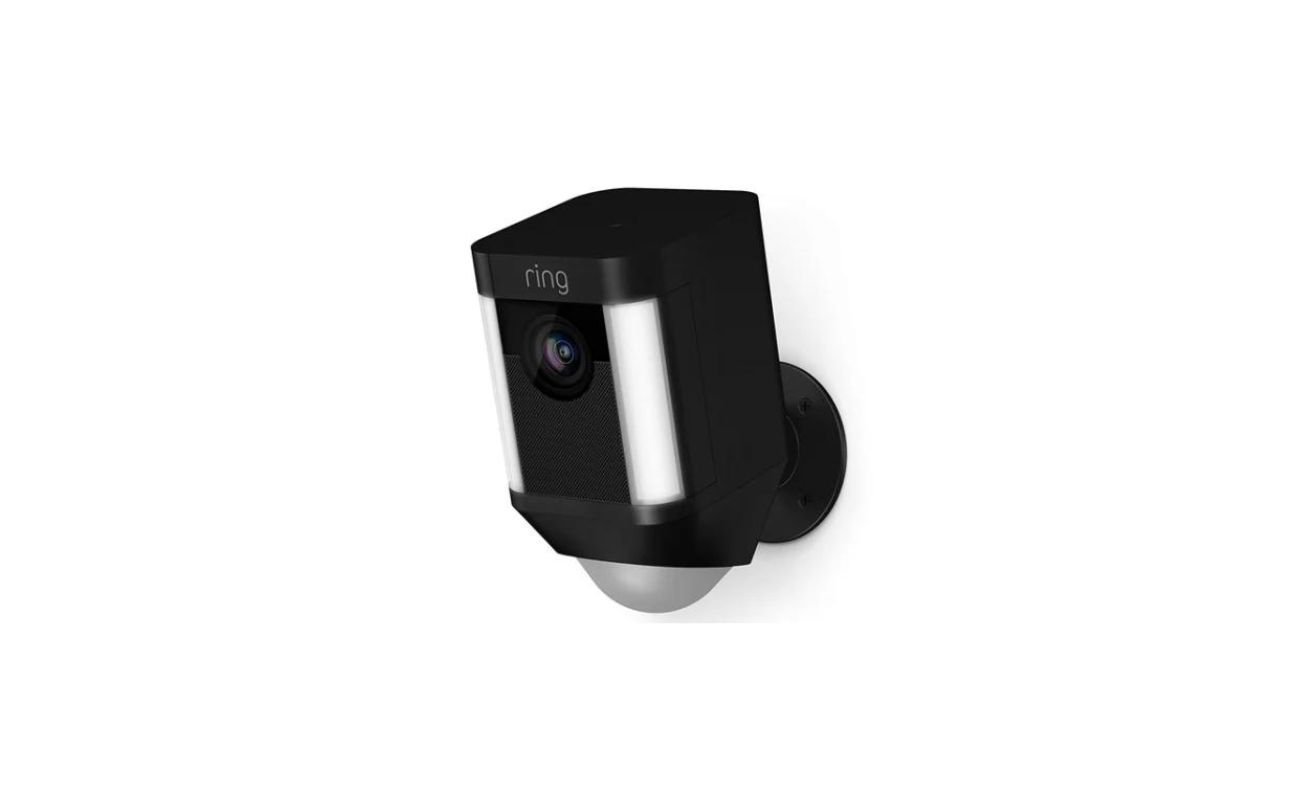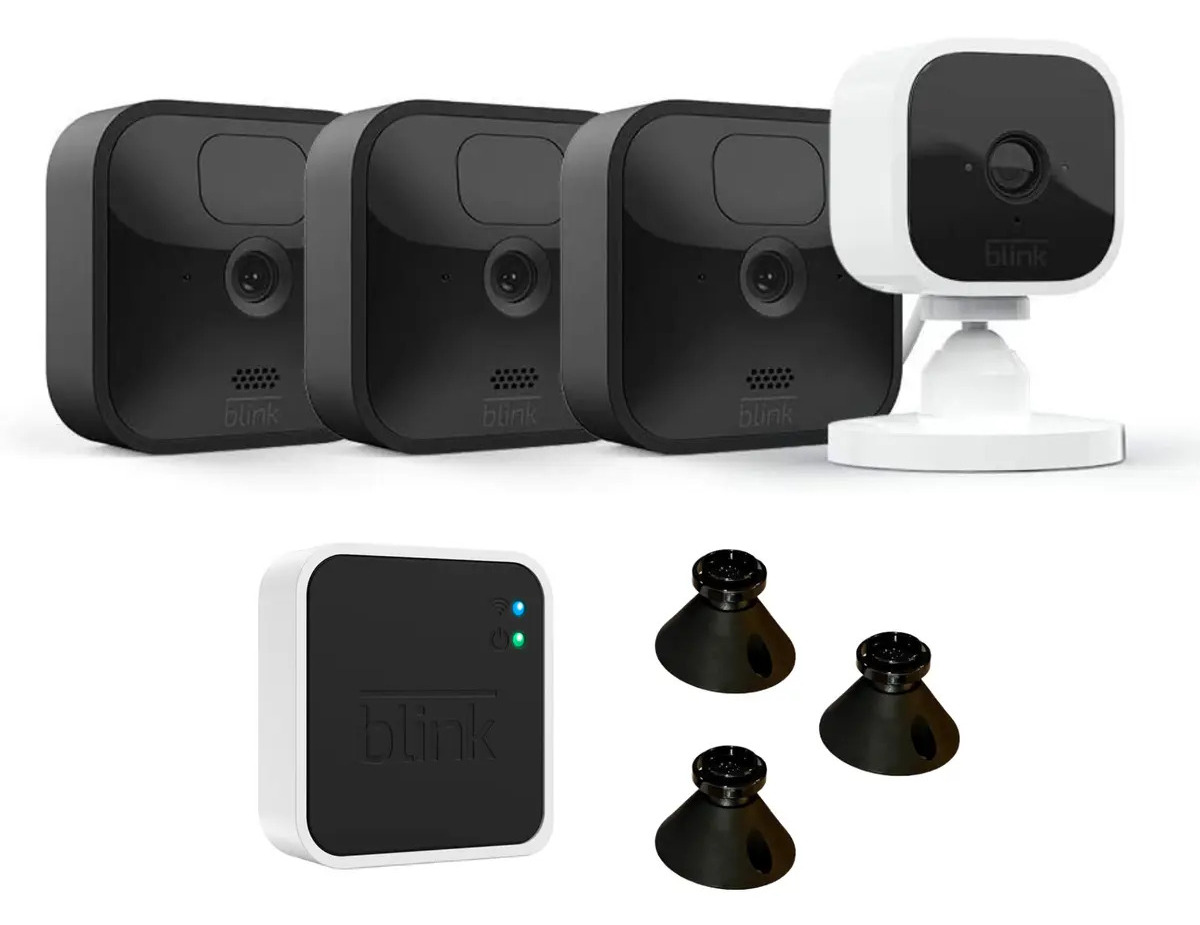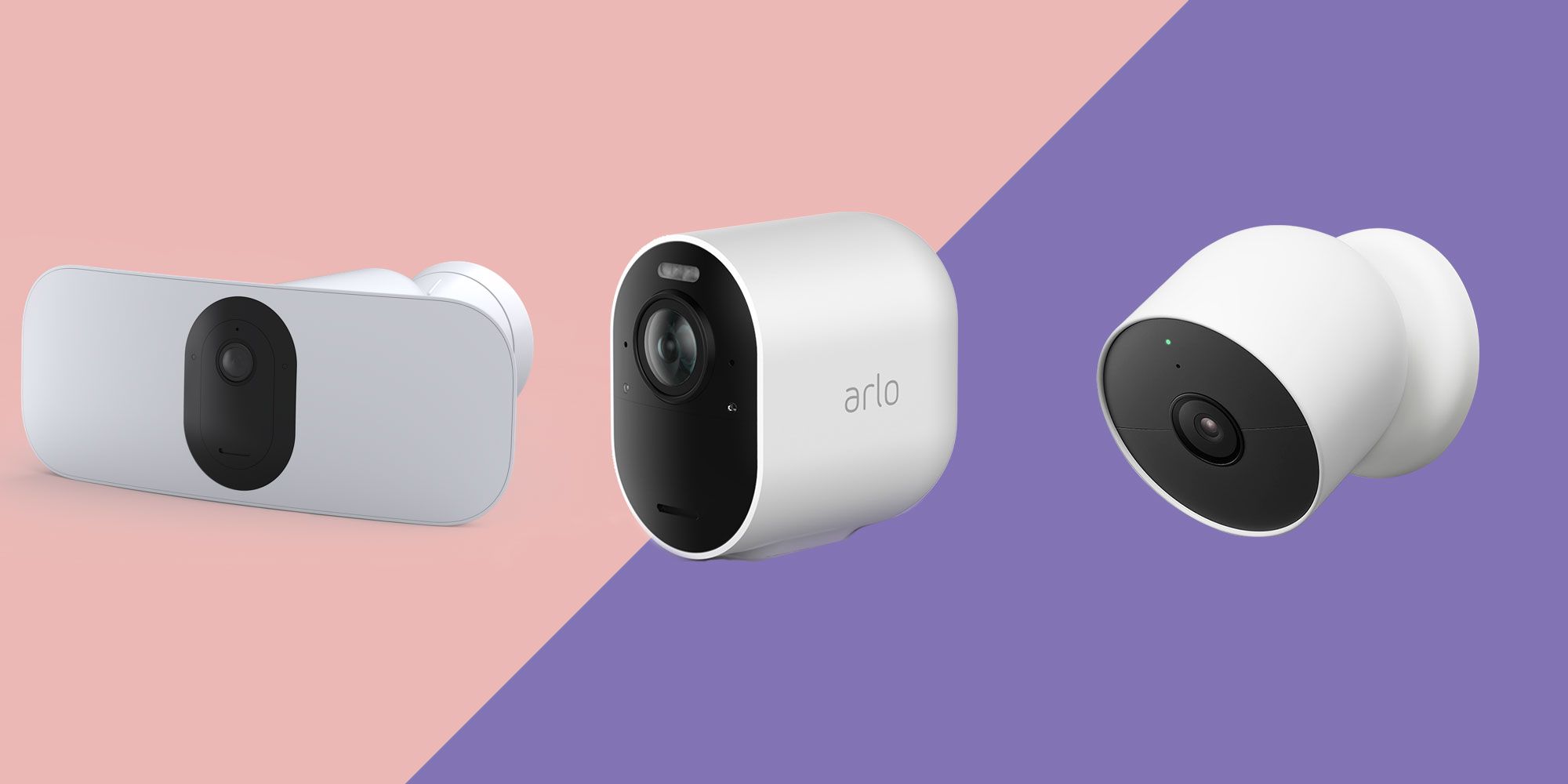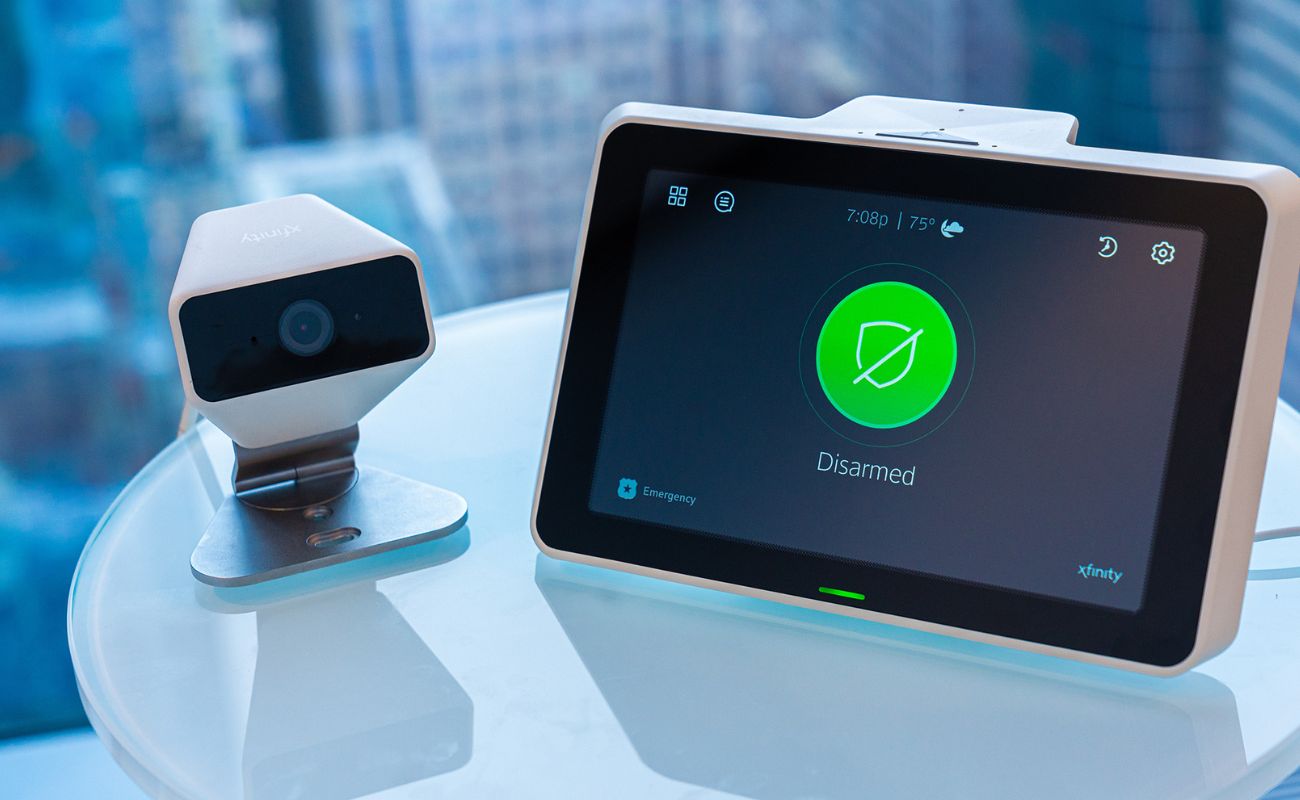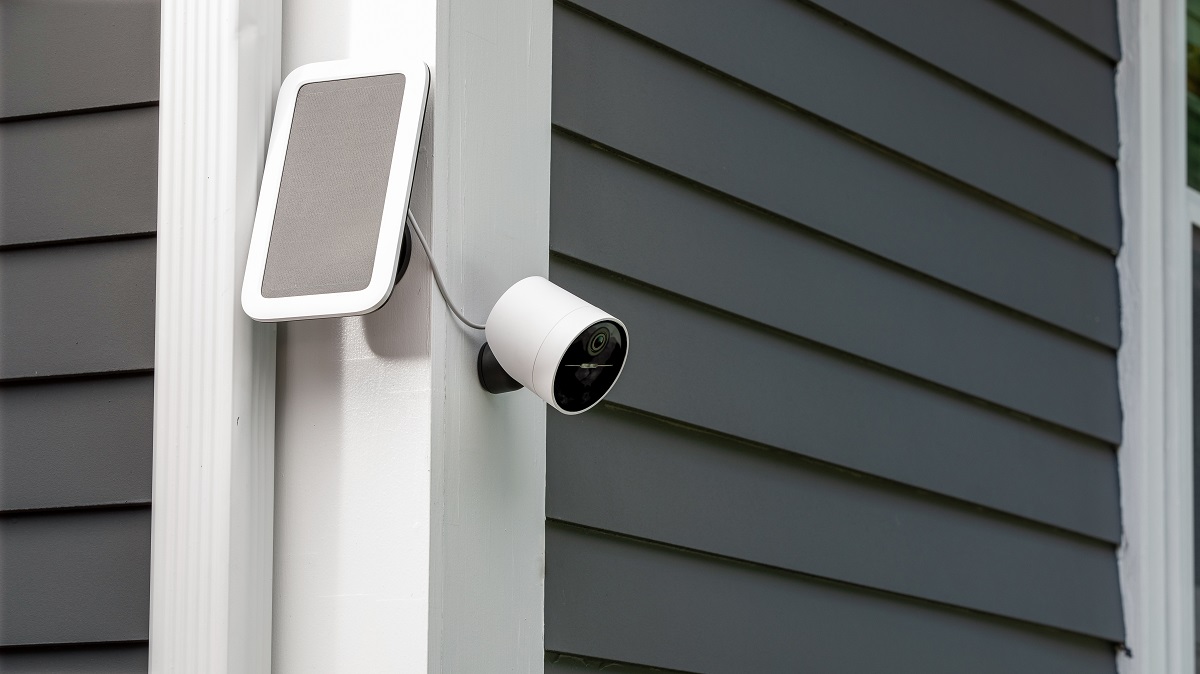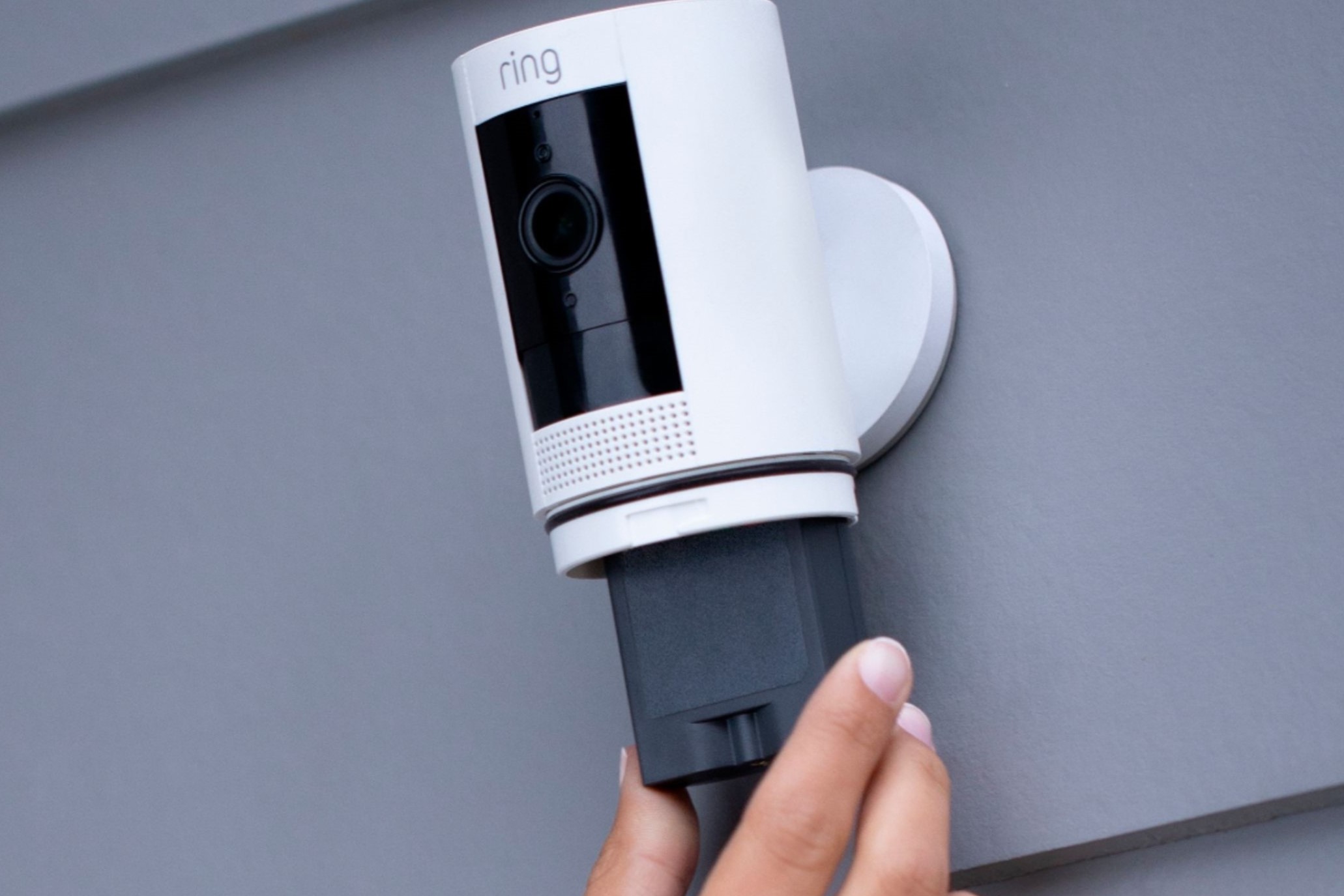Home>Home Security and Surveillance>Which Is The Best Outdoor Wireless Security Camera
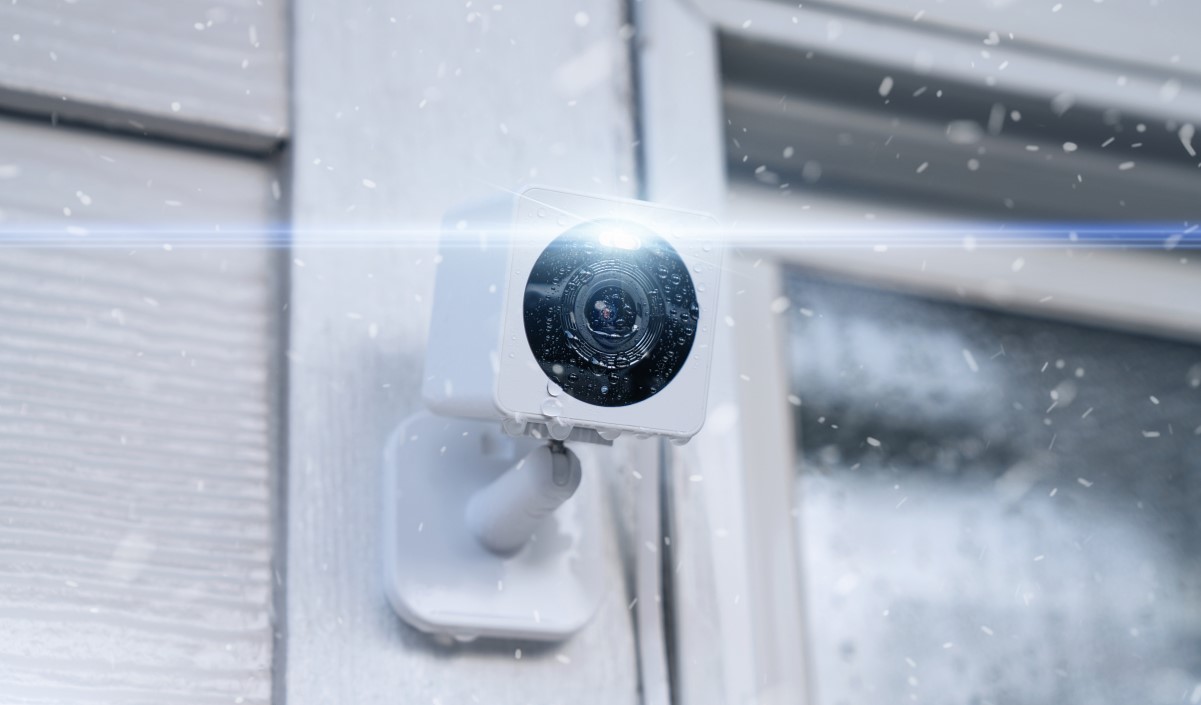

Home Security and Surveillance
Which Is The Best Outdoor Wireless Security Camera
Modified: March 6, 2024
Discover the best outdoor wireless security camera for your home security and surveillance needs. Keep your property safe with advanced features and easy installation.
(Many of the links in this article redirect to a specific reviewed product. Your purchase of these products through affiliate links helps to generate commission for Storables.com, at no extra cost. Learn more)
Introduction
Welcome to the world of outdoor wireless security cameras! In today’s fast-paced and increasingly connected world, it’s crucial to prioritize the safety and security of our homes and loved ones. That’s where outdoor wireless security cameras come into play.
Gone are the days of complicated and expensive wired surveillance systems. Outdoor wireless security cameras provide a convenient and cost-effective solution for monitoring the exterior of your home, deterring potential intruders, and keeping an eye on your property.
In this comprehensive guide, we will explore the factors to consider when choosing an outdoor wireless security camera, the top features to look for, and the best products available in the market. We will also discuss the setup and installation process, maintenance tips, and answer some frequently asked questions to help you make an informed decision.
But before we delve into the details, it’s essential to understand why outdoor wireless security cameras are a smart choice. Firstly, they offer flexibility in terms of where you can place them. With a wireless setup, you are not restricted by the location of power outlets and wiring constraints. This allows you to position the camera in the most strategic spots, ensuring optimal coverage of your property.
Secondly, outdoor wireless security cameras provide the convenience of remote monitoring. With the advancement in technology, you can now access your camera feeds via an app on your smartphone or tablet. This means that even when you are away from home, you can still keep an eye on your property, receive real-time alerts, and take necessary action if any suspicious activity is detected.
Thirdly, outdoor wireless security cameras are relatively easy to install. Without the need for extensive wiring, you can set up a wireless surveillance system with minimal hassle. This makes it a viable option for homeowners who prefer a DIY approach or those who want to avoid the cost of professional installation.
Lastly, outdoor wireless security cameras are available in a wide range of options, catering to different budgets and requirements. Whether you need a basic camera for general monitoring, a high-resolution camera for detailed footage, or a camera with advanced features like facial recognition or motion tracking, there is a suitable option for everyone.
Now that you understand the benefits of outdoor wireless security cameras let’s explore the factors to consider when choosing the right camera for your specific needs.
Key Takeaways:
- Outdoor wireless security cameras offer easy installation, remote access, and durability in various weather conditions. They provide peace of mind by allowing homeowners to monitor their property from anywhere.
- When choosing an outdoor wireless security camera, consider factors like resolution, night vision, and storage options. Regular maintenance and proper setup ensure optimal performance for home security.
Factors to Consider in Choosing an Outdoor Wireless Security Camera
When selecting an outdoor wireless security camera for your home, there are several key factors that you should take into consideration. These factors will ensure that you choose a camera that meets your specific requirements and provides reliable surveillance for your outdoor areas. Let’s explore these factors in detail:
- Outdoor Durability: One of the most important factors to consider is the camera’s durability in outdoor conditions. Look for a camera that is weatherproof and built to withstand extreme temperatures, rain, snow, and dust. A high Ingress Protection (IP) rating is an indication of the camera’s resistance to these elements.
- Resolution and Image Quality: The camera’s resolution determines the clarity and detail of the captured footage. Higher resolution cameras, such as 1080p or 4K, will provide more detailed images and make it easier to identify faces and objects. Consider your specific monitoring needs when choosing the resolution.
- Field of View: The camera’s field of view (FOV) determines the area that it can cover. A wider FOV means the camera can capture a larger area, reducing the number of cameras needed for complete coverage. However, a wider FOV may sacrifice some image detail. Choose a FOV that suits your specific surveillance requirements.
- Night Vision: Ensure that the camera has reliable night vision capabilities. Look for cameras with infrared (IR) LEDs that provide clear and detailed footage even in complete darkness. Consider the range of the night vision and whether it covers the distance you need for monitoring.
- Wireless Connectivity: Check the wireless range and stability of the camera’s connection. A strong and reliable wireless signal is essential for smooth video streaming and remote access. Make sure the camera supports the Wi-Fi protocol used in your home network.
- Motion Detection and Alerts: Look for a camera with built-in motion detection technology. This feature allows the camera to detect movement and send you alerts via email, push notifications, or app notifications. It’s important to have customizable sensitivity settings, so you don’t receive false alarms from motion triggers like moving tree branches or passing vehicles.
- Storage Options: Consider how the camera stores recorded footage. Some cameras offer local storage options through SD cards, while others provide cloud storage. Evaluate the storage capacity and any subscription fees that may be associated with cloud storage services. Choose a storage method that suits your needs and budget.
- Integration with Home Security System: If you have an existing home security system or plan to install one in the future, ensure that the camera is compatible and can integrate seamlessly. This allows you to control and monitor the camera along with other security devices from a single platform.
By considering these factors and weighing them against your specific requirements, you can choose the perfect outdoor wireless security camera that provides reliable surveillance and peace of mind for your home.
Top Features to Look for in an Outdoor Wireless Security Camera
When selecting an outdoor wireless security camera, it’s important to look for key features that enhance its performance, functionality, and usability. These features can significantly impact the camera’s effectiveness in monitoring your outdoor areas. Let’s explore the top features to consider when choosing an outdoor wireless security camera:
- High-Resolution Imaging: Opt for a camera with a high-resolution sensor, such as 1080p or 4K, to ensure clear and detailed video footage. This allows for easy identification of faces, license plates, and other important details.
- Wide Field of View: A camera with a wide field of view (FOV) is essential for capturing a larger area without the need for multiple cameras. Look for cameras with a FOV of 100 degrees or wider to ensure comprehensive coverage.
- Night Vision Capability: Choose a camera with infrared (IR) LEDs for reliable night vision. This allows the camera to capture clear footage even in complete darkness. Look for cameras with a substantial night vision range to cover the desired distance.
- Two-Way Audio: Two-way audio capability enables you to communicate with visitors or potential intruders through the camera. This can be useful for giving instructions, warning trespassers, or even talking to delivery personnel.
- Motion Detection and Alerts: Cameras with built-in motion detection sensors can detect movement and send you notifications or alerts when triggered. Look for customizable motion detection settings that allow you to adjust sensitivity levels and define specific areas for monitoring.
- Mobile App Compatibility: Ensure that the camera is compatible with a mobile app that allows you to access and control the camera remotely. The app should offer features like live streaming, recording playback, and the ability to receive real-time alerts and notifications.
- Cloud Storage or Local Storage Options: Consider whether the camera offers cloud storage or local storage options for recorded footage. Cloud storage provides convenient access to recordings from anywhere, while local storage through an SD card offers a more cost-effective solution.
- Weather Resistance: Outdoor cameras are exposed to various weather conditions, so choose one that is weatherproof and designed to withstand extreme temperatures, rain, snow, and dust. Look for cameras with a high Ingress Protection (IP) rating to ensure durability.
- Integration with Smart Home Systems: If you have a smart home ecosystem, it’s beneficial to choose a camera that can integrate with your existing devices and platforms. This enables you to control and monitor the camera alongside other smart devices from a single interface.
- Power Options: Consider the power options available for the camera. Some cameras operate on built-in rechargeable batteries, while others require wired or solar power. Choose a power option that aligns with your preferences and the availability of power outlets in the desired installation area.
By considering these top features, you can select an outdoor wireless security camera that meets your surveillance needs, offers enhanced functionality, and provides peace of mind for the protection of your home and loved ones.
Best Outdoor Wireless Security Cameras in the Market
With the growing popularity of outdoor wireless security cameras, there is a wide range of options available in the market. To help you make an informed decision, we have compiled a list of some of the best outdoor wireless security cameras based on their features, performance, customer reviews, and overall reliability.
- Arlo Pro 3: The Arlo Pro 3 is a top-tier outdoor wireless security camera that offers outstanding video quality with 2K resolution. It features a wide field of view, advanced motion detection, and color night vision. The camera is weatherproof and offers free cloud storage for up to 30 days.
- Ring Stick Up Cam Battery: The Ring Stick Up Cam Battery is a versatile and affordable option. It offers 1080p video quality, two-way audio, and adjustable motion detection. The camera can be powered by a rechargeable battery or connected to solar panels for continuous power.
- Nest Cam Outdoor: The Nest Cam Outdoor is a reliable camera with 1080p video resolution and night vision. It features advanced motion detection, facial recognition, and the ability to differentiate between people and other motion. The camera integrates seamlessly with the Nest ecosystem for smart home integration.
- Reolink Argus 2: The Reolink Argus 2 is a budget-friendly option with impressive features. It offers 1080p resolution, customizable motion detection, and two-way audio. The camera is powered by rechargeable batteries and supports both local storage and cloud storage options.
- Amcrest ProHD Outdoor: The Amcrest ProHD Outdoor camera delivers reliable performance and excellent video quality with its 1080p resolution. It features motion detection, night vision, and the ability to pan, tilt, and zoom remotely. The camera supports both local and cloud storage options.
These are just a few examples of the best outdoor wireless security cameras available in the market. It’s important to consider your specific requirements, budget, and preferences when making a decision. Take the time to read customer reviews and compare features to ensure that the camera you choose meets your expectations and provides reliable surveillance for your outdoor spaces.
Comparison of the Top Outdoor Wireless Security Cameras
Choosing the right outdoor wireless security camera can be a daunting task with so many options available. To assist you in making an informed decision, let’s compare some of the top models in terms of their key features and specifications.
| Camera Model | Resolution | Field of View | Night Vision | Two-Way Audio | Motion Detection | Storage Options | Price |
|---|---|---|---|---|---|---|---|
| Arlo Pro 3 | 2K | 160 degrees | Color night vision | Yes | Advanced motion detection | Free 30-day cloud storage | $$ |
| Ring Stick Up Cam Battery | 1080p | 115 degrees | Black and white night vision | Yes | Adjustable motion detection | Subscription-based cloud storage | $ |
| Nest Cam Outdoor | 1080p | 130 degrees | Black and white night vision | Yes | Advanced motion detection with facial recognition |
Subscription-based cloud storage | $$$ |
| Reolink Argus 2 | 1080p | 130 degrees | Black and white night vision | Yes | Customizable motion detection | Local storage and subscription-based cloud storage | $ |
| Amcrest ProHD Outdoor | 1080p | 92 degrees | Black and white night vision | Yes | Motion detection | Local storage and subscription-based cloud storage | $ |
When comparing these top outdoor wireless security cameras, it’s important to consider your specific needs and budget. The Arlo Pro 3 offers exceptional video quality and advanced features at a higher price point. The Ring Stick Up Cam Battery is a more budget-friendly option with basic features. The Nest Cam Outdoor provides extensive functionality and integration with the Nest ecosystem. The Reolink Argus 2 and Amcrest ProHD Outdoor offer great value for money options with customizable features and varying storage options.
Consider factors like resolution, field of view, night vision capabilities, two-way audio, motion detection, and storage options when comparing these cameras. Additionally, think about the overall cost, including any subscription fees for cloud storage services.
By carefully evaluating these aspects and aligning them with your specific requirements, you can select the outdoor wireless security camera that best fits your needs and provides reliable monitoring for your outdoor spaces.
Pros and Cons of Outdoor Wireless Security Cameras
Outdoor wireless security cameras offer numerous benefits in terms of convenience, flexibility, and peace of mind. However, they also come with their own set of drawbacks. Let’s take a closer look at the pros and cons of using outdoor wireless security cameras:
Pros:
- Ease of Installation: Outdoor wireless security cameras are relatively easy to install compared to wired systems. They do not require complex wiring or drilling holes, making them a viable DIY option for homeowners.
- Flexibility in Placement: With a wireless setup, these cameras offer flexibility in terms of placement. You can position them in strategic locations without being limited by the availability of power outlets or wiring constraints.
- Remote Access and Monitoring: Wireless cameras allow for remote access and monitoring through smartphone apps or web browsers. You can view live feeds, playback recordings, and receive real-time notifications from anywhere, providing peace of mind even when you are away from home.
- Expandability: It’s easy to expand your outdoor surveillance system with wireless cameras. You can add additional cameras as needed without the need for complicated installations or extensive wiring.
- Cost-Effective: Wireless systems often have a lower upfront cost compared to wired systems. They eliminate the need for professional installation, which can significantly reduce the overall expense.
Cons:
- Dependence on Wi-Fi Signal: Outdoor wireless cameras are dependent on a stable Wi-Fi signal. If the signal is weak or unreliable in certain areas of your property, it may cause lag in video streaming or intermittent connectivity issues.
- Battery Life or Power Source: Wireless cameras are powered by either rechargeable batteries or electrical outlets. Battery-powered cameras require regular charging or battery replacement, whereas cameras connected to power sources may be limited by their proximity to outlets.
- Interference: Wireless systems can be susceptible to interference from other devices, such as routers, microwaves, or cordless phones. This interference may affect the quality and reliability of the camera’s signal.
- Limited Range: The wireless range of these cameras may be limited, especially if there are obstacles like walls or large distances between the camera and the router. It’s important to consider the range of the camera and ensure that it can maintain a strong and stable connection to your network.
- Dependence on Cloud Storage: Many wireless cameras offer cloud storage for recorded footage, but this often comes with subscription fees. Depending on the camera and storage plan, these recurring costs can add up over time.
Understanding these pros and cons will help you make an informed decision when considering outdoor wireless security cameras. Evaluate your specific needs, the layout of your property, and the available infrastructure to determine if these cameras are the right fit for your home security setup.
How to Set Up and Install an Outdoor Wireless Security Camera
Setting up and installing an outdoor wireless security camera is generally straightforward and can be done by following a few simple steps. Here’s a step-by-step guide to help you get started:
Read more: Which Is The Best Wireless Outdoor Camera
1. Choose the Right Location:
Identify the areas of your property that require monitoring and select suitable locations for your outdoor wireless security cameras. Consider factors such as the field of view, coverage area, and proximity to power sources or Wi-Fi signal.
2. Check Wi-Fi Signal Strength:
If your camera connects wirelessly, ensure that you have a strong and stable Wi-Fi signal in the selected locations. You can use your smartphone or computer to check the signal strength using the camera’s intended placement.
3. Mount the Camera:
Depending on the camera model, follow the manufacturer’s instructions to mount the camera securely. This typically involves attaching a mounting bracket to the desired location and then fixing the camera onto the bracket.
4. Power Source:
If your camera requires a power source, ensure that it is within reach of an electrical outlet. If it is a battery-powered camera, make sure to charge the batteries fully before installation or follow the manufacturer’s instructions for battery insertion.
Read more: Which Are The Best Outdoor Security Cameras
5. Connect to Wi-Fi:
Follow the camera’s instructions to connect it to your home Wi-Fi network. Typically, this involves accessing the camera’s settings through a mobile app, scanning for available networks, and inputting your Wi-Fi credentials.
6. Configure Camera Settings:
After connecting to your Wi-Fi, customize the camera settings according to your preferences. This may include adjusting motion detection sensitivity, setting up activity zones, enabling night vision, or configuring alert notifications.
7. Test the Camera:
Once the camera is properly installed and configured, test it to ensure that it is functioning correctly. Check the video feed, test motion detection, and verify that you are receiving notifications or alerts as expected.
8. Fine-tune and Adjust:
After testing, make any necessary adjustments to optimize the camera’s performance. This may involve repositioning the camera for better angles, adjusting sensitivity levels, or fine-tuning motion detection settings to avoid false alarms.
9. Monitor and Maintain:
Regularly monitor the camera’s performance and ensure that it is capturing the desired footage. Clean the camera lens periodically to maintain optimal image quality and check for firmware updates from the manufacturer to keep your camera up-to-date.
It’s important to note that specific setup instructions may vary depending on the camera model and manufacturer. Always refer to the user manual or online guides provided by the manufacturer for detailed, model-specific guidance.
By following these steps and referring to the manufacturer’s instructions, you can easily set up and install an outdoor wireless security camera to enhance the safety and security of your home.
Tips for Maintaining and Operating Outdoor Wireless Security Cameras
Maintaining and operating your outdoor wireless security cameras properly is essential to ensure their long-term performance and reliability. By following these tips, you can maximize the effectiveness of your security system:
1. Regularly Clean the Camera Lens:
Dust, dirt, and debris can accumulate on the camera lens over time, affecting the quality of the footage. Regularly clean the lens with a soft, lint-free cloth to maintain clear and sharp images.
2. Check for Obstructions:
Periodically inspect the camera’s field of view for any obstructions that might hinder its effectiveness. Trim tree branches, clear away spider webs, and ensure there are no objects blocking the camera’s line of sight.
3. Secure Camera Mounts:
Ensure that the camera mounts are securely attached and properly tightened. Vibrations or strong winds can sometimes cause the camera to move or shift, resulting in a misaligned field of view.
4. Monitor Wi-Fi Signal Strength:
Regularly check the Wi-Fi signal strength in the area where the camera is installed. If the signal is weak or unstable, consider installing a Wi-Fi extender or repositioning the camera closer to the router for a more reliable connection.
5. Update Firmware:
Check for firmware updates from the camera manufacturer regularly. These updates often provide bug fixes, improved functionality, and security enhancements. Keeping your camera firmware up-to-date ensures optimal performance.
6. Schedule Regular Camera Checks:
Set a schedule to regularly check the camera’s performance, including video feeds, motion detection, and alerts. This allows you to identify any issues promptly and address them before they affect your camera’s effectiveness.
7. Secure Your Network:
Ensure that your home Wi-Fi network is secure by using strong passwords and enabling encryption. A secure network prevents unauthorized access to your camera feeds and protects your personal information.
8. Backup Important Footage:
Consider backing up important footage from your cameras to a separate storage device or a cloud-based storage service. This provides an extra layer of protection in case the camera is tampered with or the footage is lost due to unforeseen circumstances.
9. Adjust Motion Detection Settings:
Tweak the motion detection settings based on your specific needs. Fine-tune the sensitivity levels and create activity zones to minimize false alarms triggered by irrelevant motion, such as passing vehicles or swaying trees.
10. Monitor Battery Life (if applicable):
If your wireless camera is battery-powered, regularly monitor the battery life and recharge or replace them as needed. Many cameras have battery level indicators or notifications that alert you when the battery is running low.
By following these tips, you can maintain the optimal functioning of your outdoor wireless security cameras and keep your home well-protected. Remember to refer to the manufacturer’s instructions and guidelines for any specific maintenance requirements for your camera model.
Frequently Asked Questions (FAQs) about Outdoor Wireless Security Cameras
Here are answers to some common questions about outdoor wireless security cameras:
1. Are outdoor wireless security cameras easy to install?
Yes, outdoor wireless security cameras are generally easy to install. They don’t require extensive wiring or drilling and can often be set up as a DIY project. However, some cameras may require a power source or careful placement to ensure a strong Wi-Fi signal.
2. Can outdoor wireless security cameras withstand harsh weather conditions?
Most outdoor wireless security cameras are designed to withstand various weather conditions. They are often weatherproof and built to be durable, resistant to rain, snow, dust, and extreme temperatures. Look for cameras with a high Ingress Protection (IP) rating for added protection.
3. Can outdoor wireless security cameras work at night?
Yes, outdoor wireless security cameras are equipped with night vision capabilities to capture clear footage in low-light or complete darkness. They use infrared (IR) LEDs to illuminate the area and capture black and white images or, in some cases, color night vision.
4. How far can an outdoor wireless security camera transmit its signal?
The wireless range of outdoor cameras varies depending on the specific camera model and external factors such as obstacles and interference. On average, outdoor wireless cameras can transmit their signal up to a few hundred feet with a clear line of sight to the Wi-Fi router.
5. Can outdoor wireless security cameras store footage?
Yes, outdoor wireless security cameras offer various storage options for recorded footage. They may have built-in SD card slots for local storage or offer cloud storage services. Some cameras offer both options, allowing you to choose the storage method that best suits your needs.
6. Can I access my outdoor wireless security camera remotely?
Yes, most outdoor wireless security cameras can be accessed and monitored remotely. They usually come with mobile apps or web interfaces that allow you to view live feeds, playback recordings, and receive real-time alerts and notifications from anywhere using your smartphone or computer.
7. Can outdoor wireless security cameras be integrated with smart home systems?
Many outdoor wireless security cameras offer integration with smart home systems. This allows you to control and monitor the camera alongside other smart devices in your home. Make sure to check compatibility and look for cameras that support the integration options you desire.
8. Do outdoor wireless security cameras require ongoing fees?
While some outdoor wireless security cameras provide free basic features, additional services such as cloud storage or advanced functionalities may require a subscription or ongoing fees. Consider your storage needs and any potential recurring costs before purchasing a camera.
If you have specific questions about a particular camera model or need further assistance, it’s best to consult the product’s user manual or reach out to the manufacturer’s customer support for clarification.
Conclusion
Outdoor wireless security cameras have revolutionized home surveillance, offering convenience, flexibility, and peace of mind to homeowners. With their ease of installation, remote access capabilities, and a wide range of features, these cameras have become an essential component of modern home security systems.
In this comprehensive guide, we discussed the factors to consider when choosing an outdoor wireless security camera, such as outdoor durability, resolution, field of view, night vision, and wireless connectivity. We also highlighted the top features to look for, including high-resolution imaging, wide field of view, two-way audio, motion detection, and the availability of storage options.
We provided a list of the best outdoor wireless security cameras in the market, comparing their key features, resolution, field of view, night vision, and pricing. We also discussed the pros and cons of using these cameras, emphasizing their ease of installation, flexibility, and remote access capabilities, while considering factors like dependence on Wi-Fi, battery life, and potential interference.
Furthermore, we provided a guide on how to set up and install an outdoor wireless security camera, offering step-by-step instructions for choosing the right location, checking Wi-Fi signal strength, mounting the camera, connecting to Wi-Fi, configuring camera settings, testing the camera, and maintaining it for optimal performance.
To conclude, outdoor wireless security cameras are a reliable and effective solution for monitoring the exterior of your home. They offer convenience, flexibility, and the ability to remotely access and monitor your property. By considering your specific needs, selecting the right camera, properly setting it up, and maintaining it regularly, you can enhance the security of your home and achieve peace of mind.
Remember to carefully evaluate the options available in the market, seek expert advice if needed, and consult the manufacturer’s instructions and guidelines for any specific requirements or updates related to your chosen outdoor wireless security camera. Stay vigilant, stay secure!
Frequently Asked Questions about Which Is The Best Outdoor Wireless Security Camera
Was this page helpful?
At Storables.com, we guarantee accurate and reliable information. Our content, validated by Expert Board Contributors, is crafted following stringent Editorial Policies. We're committed to providing you with well-researched, expert-backed insights for all your informational needs.
